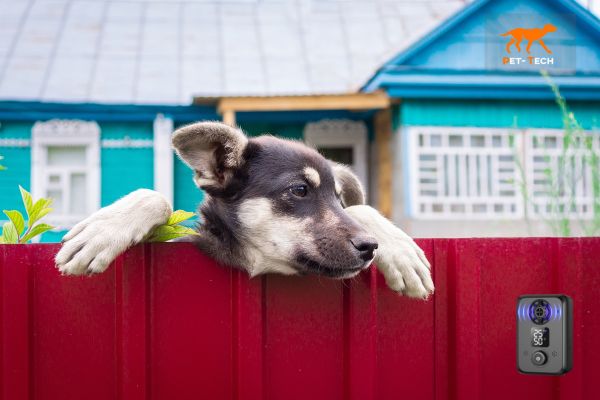It’s a real shame that dogs can’t talk to us like they do in the animal movies, but the movies aren’t completely wrong. Dogs do have their own special way of communicating! So, how do dogs communicate? Dog body language is made primarily through dog body posture, scents, and a variety of signals, most of which are non-verbal.
With the right knowledge, dog owners can quickly learn the subtle cues and body language of their dogs. Understanding your dog's body language is essential for building a strong bond, ensuring their well-being, and preventing misunderstandings.
If you are new to owning a dog, this article can teach you the body language of dogs and the key signals to help better understand your dog. Time to explore the importance of decoding dog body language and provide tips on how to interpret their signals.
The Importance of Understanding Dog Body Language
Understanding canine body language is crucial:
- Strengthening your Bond: By understanding your dog's signals, you can respond more appropriately to their needs, and build a connection and a stronger, more trusting relationship.
- Ensuring Safety: Recognising signs of a dog's stress, fear, or aggression can prevent dangerous situations and ensure the safety of both your dog and others.
- Improving Training: Knowing how your dog feels during training sessions can help you adjust your approach, making training more effective and enjoyable for both of you.
- Promoting Well-being: Being attuned to your dog's emotional state can help you address any issues early, ensuring their overall health and happiness.

How to Read Dog Body Language
Dogs use their entire bodies to communicate. From their ears to their tails, every part plays a role in conveying their emotions and intentions. Every part of their body sends a specific signal, helping to convey different emotions and intentions.
Here’s how to read some common signals of dog communication:
Reading Facial Expressions
A dog’s face can tell you a lot about how they’re feeling. Here are some key areas to observe:
- Eyes: Relaxed eyes with a soft gaze indicate a calm and content dog. Wide eyes with a lot of white showing, often referred to as "whale eye," can indicate fear or stress. Squinting or avoiding eye contact may also signal discomfort. Lastly, narrowed eyes are a precursor to dog aggression.
- Ears: The position of your dog’s ears can give you clues about their mood. Ears held back can indicate fear or submission. Pricked-up ears are a sign of alertness, maybe they sense a danger or are accessing the situation, and neutral ears suggest relaxation.
- Mouth: A relaxed dog will have a slightly open mouth, possibly with a gentle pant. Lip licking, yawning (when not tired), or showing teeth can be signs of stress or anxiety. A tightly closed mouth sometimes accompanied by a snarl can also indicate tension. A panting dog is in distress and is either overheating (on a hot day) or emotionally stressed.
Interpreting Body Postures
A dog’s body posture is a clear indicator of their emotional state. Dogs posturing can mean a few different things. Here are some common postures and what dog body language means:
- Relaxed: A relaxed dog will have a loose, wiggly body with no tension. They may lie down with their belly exposed or sit with their weight evenly distributed.
- Alert: An alert dog stands tall with their ears up, eyes focused, and body leaning slightly forward. They’re ready to react to whatever has caught their attention.
- Fearful or Submissive: Stressed dog body language, AKA: A fearful or submissive dog may crouch low to the ground, tuck their tail between their legs, and avoid eye contact. They might also roll onto their back in a submissive gesture. Fearful dogs may also shiver.
- Aggressive: Signs of aggressive dog body language include dogs having a stiff, tense body, with their weight forward and hackles raised. They may show their teeth, growl, or snap. This posture is a clear warning to back off.
Understanding Tail Wagging
Tail wagging is often a misunderstood dog body language. While it can indicate happiness, it’s not always a sign of friendliness. Here’s how to interpret different types of tail wagging:
- Fast Wagging with Loose Body: This usually indicates excitement and friendliness. The dog is happy to see you or is eager to engage.
- Slow Wagging: This can indicate insecurity or a tentative attitude. The dog is unsure and is assessing the situation.
- Stiff Wagging with Tense Body: This can be a sign of agitation or aggression. The dog is not relaxed and might be ready to attack or defend itself.
- Tail Tucked: A tail tucked between the legs is a clear sign of fear or submission. The dog is feeling scared or threatened.
Why is This Relevant?
Understanding a dog's body language and meaning, as well as social cues can make you a better dog trainer, improve the bond with your pet and help with insights on how to optimise the use of dog e-collars like the bark collars or training collars.
Understanding dog body language cues can help prevent dog aggression, prevent accidents and also help you decide when to step back and let your dog learn independently and when to intervene. Remember, no one knows your dog better than you do.
Body language for dogs is quite a bit different to humans but easy to figure out. Decoding your dog's body language is key to understanding their needs and emotions. By paying attention to their facial expressions, body postures, and tail movements, you can better respond to their signals and build a deeper, more trusting relationship. Remember, every dog is unique, so take the time to learn your dog's specific cues and signals. This understanding will lead to a happier, healthier, and more harmonious life together.





